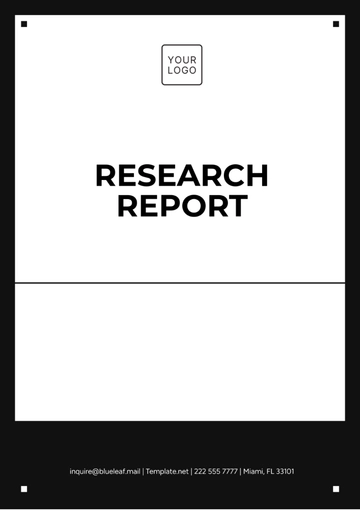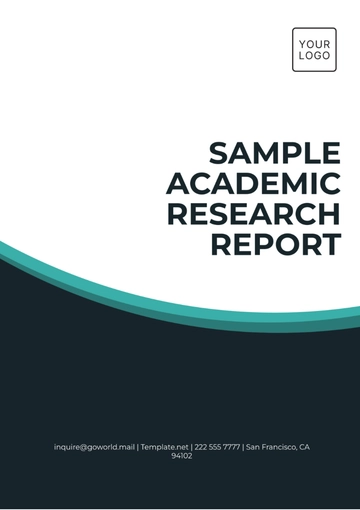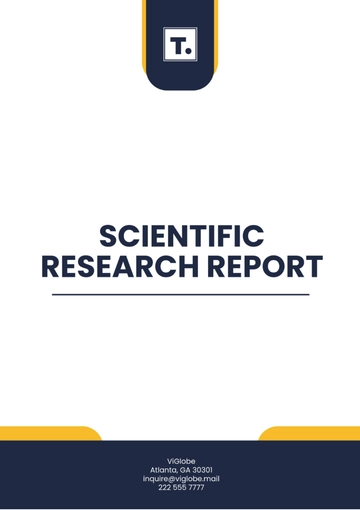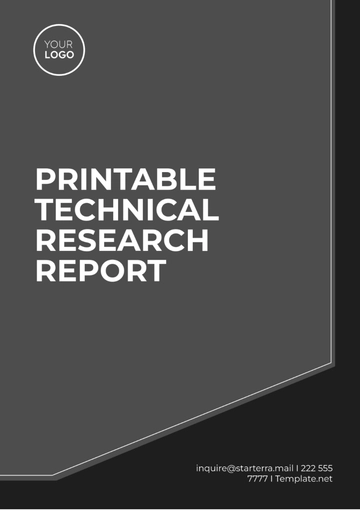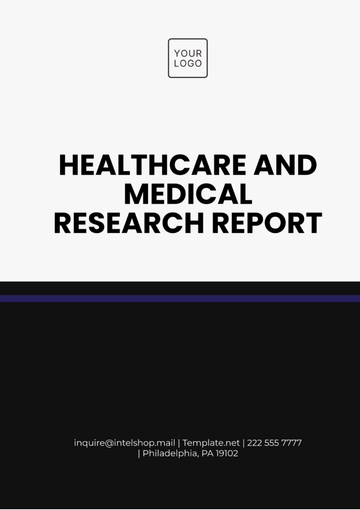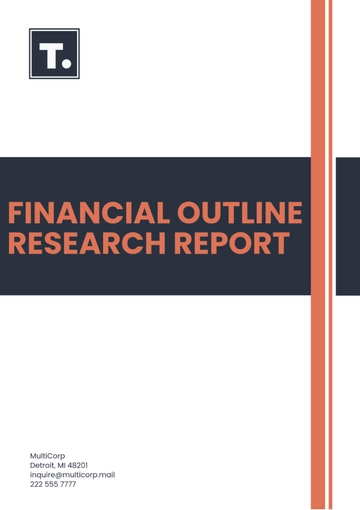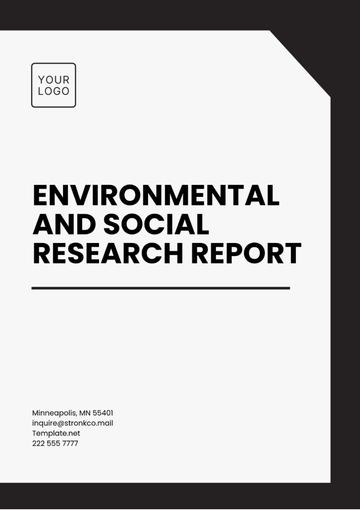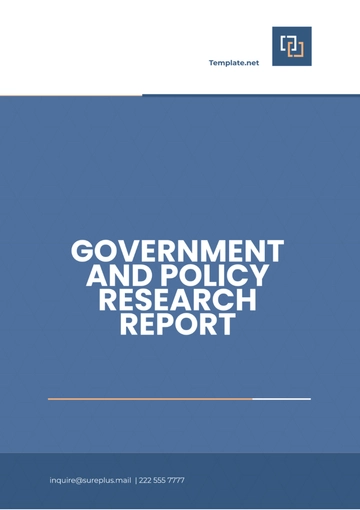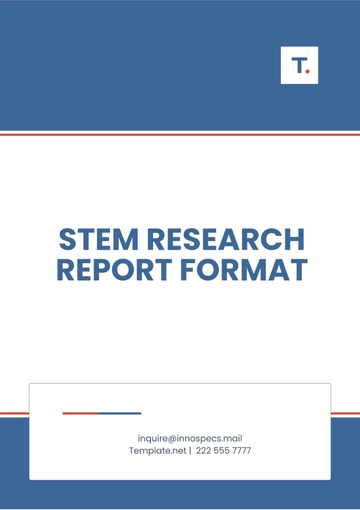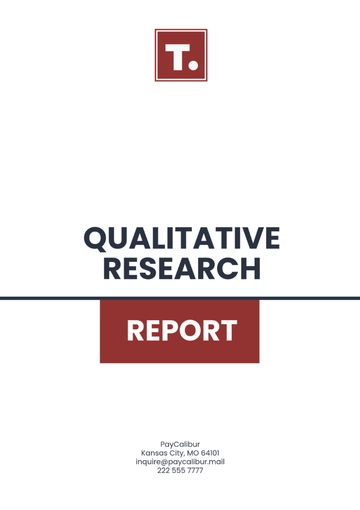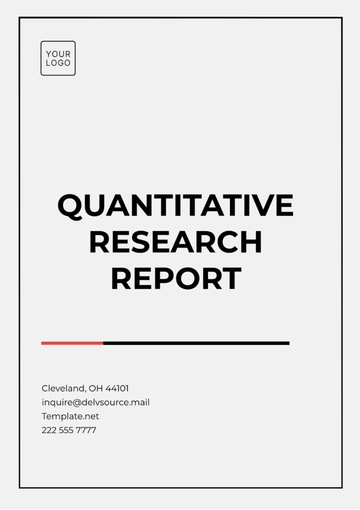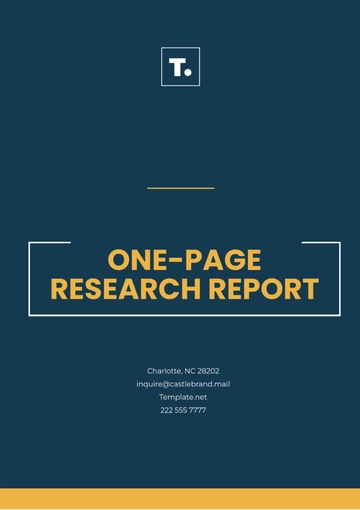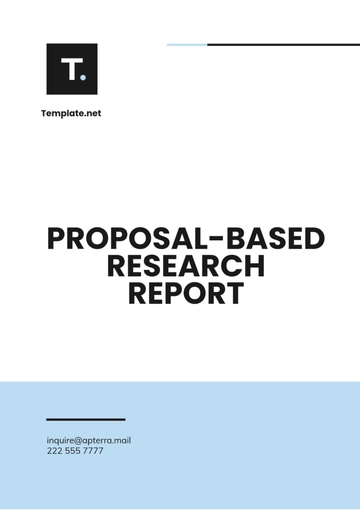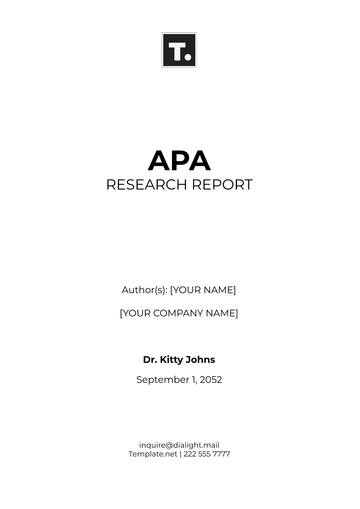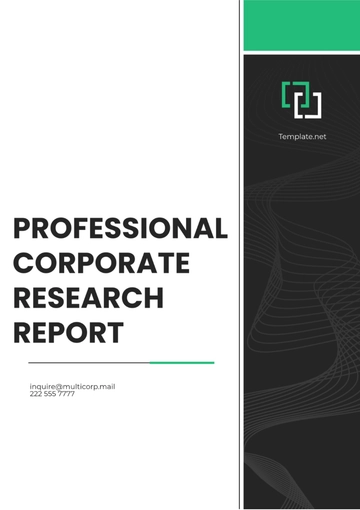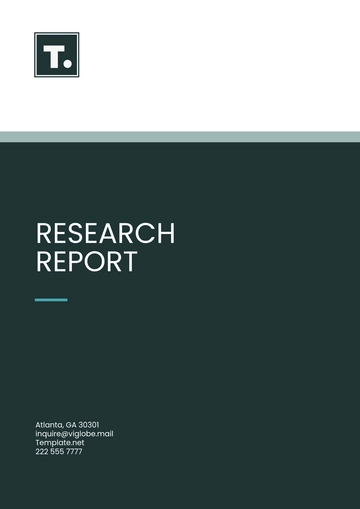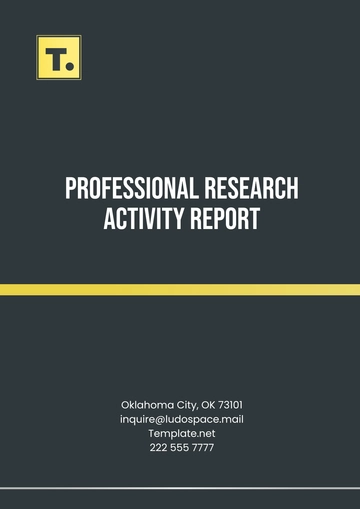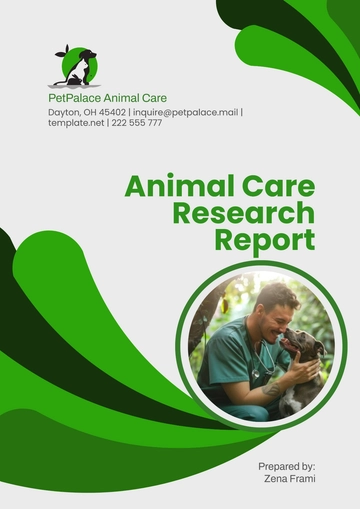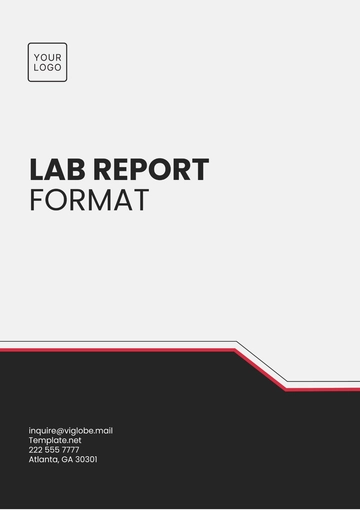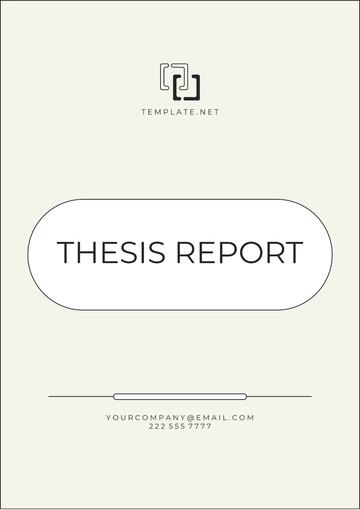Free Emergency Situation Research Report
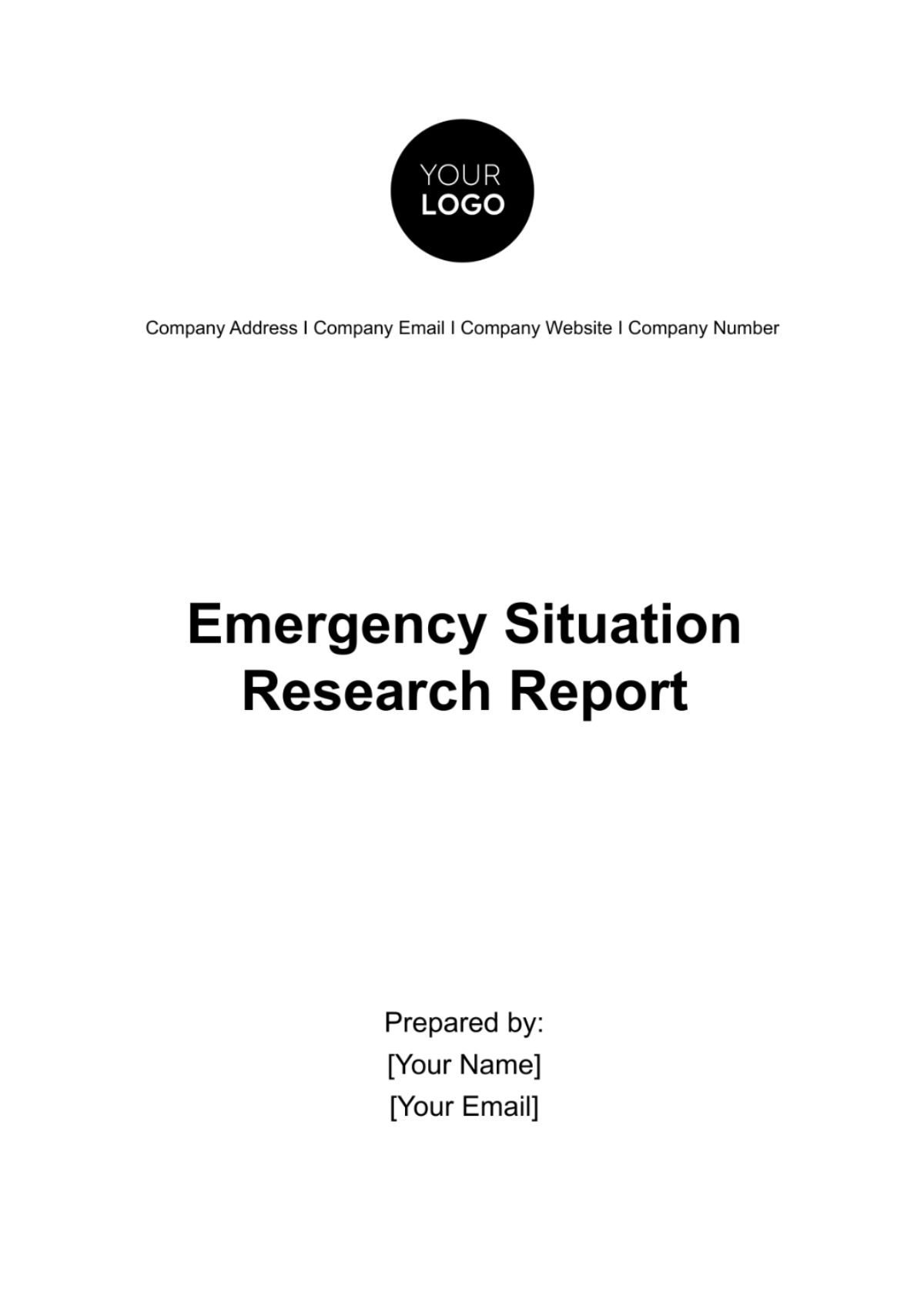
Executive Summary
The Emergency Situation Research Report provides a comprehensive analysis of a catastrophic earthquake incident that occurred in the City of Metropolis on October 28, 2050. This report aims to deliver valuable insights into the incident's impact, response efforts, and recommendations for future preparedness.
Introduction
A. Background
On October 28, 2050, the City of Metropolis experienced a devastating 7.2 magnitude earthquake that caused widespread damage and disruption. Metropolis, located in the Pacific Northwest region of the United States, is known for its susceptibility to seismic activity due to its proximity to the Cascadia Subduction Zone. This earthquake was a significant event in the city's history, prompting the need for a comprehensive research report.
B. Objectives
The objectives of this research report are as follows:
To assess the extent of damage caused by the earthquake, including its impact on infrastructure, the environment, and the local economy.
To understand the immediate response efforts undertaken by emergency services and organizations.
To evaluate the coordination between our company, [Your Company Name], and local authorities during the emergency response.
To analyze the communication strategy employed to disseminate information to the public, stakeholders, and affected individuals during and after the earthquake.
To provide recommendations for short-term and long-term measures to address the aftermath of the earthquake and improve future preparedness in Metropolis.
Methodology
A. Data Collection
For this research report, a multi-faceted approach was employed to gather comprehensive data regarding the earthquake incident in Metropolis:
Surveys: We conducted surveys among residents and businesses in the affected areas to gather firsthand accounts of the earthquake's impact on individuals and organizations. A total of 1,500 respondents participated in the survey.
Interviews: In-depth interviews were conducted with key stakeholders, including local government officials, emergency responders, and community leaders. These interviews provided valuable insights into the response efforts and challenges faced during the emergency.
Data Sources: We collected and analyzed data from various sources, including seismic activity records, geological reports, satellite imagery, and government databases. This data was instrumental in assessing the geological factors contributing to the earthquake and its aftermath.
Field Observations: Our team conducted field visits to assess the extent of damage to infrastructure, natural resources, and the environment. Visual inspections and data collection at ground zero sites were carried out to validate our findings.
B. Data Analysis
Data collected from the above-mentioned sources were meticulously analyzed using advanced software and statistical tools. The analysis encompassed the following areas:
Damage Assessment: The extent of damage to buildings, roads, bridges, and utilities was quantified, and a damage severity index was developed to prioritize reconstruction efforts.
Casualty Report: Information on casualties, injuries, and fatalities was compiled and analyzed to understand the human impact of the earthquake.
Environmental Impact: Data on environmental changes, such as soil liquefaction and water pollution, were assessed to determine the ecological consequences of the earthquake.
Infrastructure Damage: The assessment of infrastructure damage included the identification of critical facilities and utilities that required immediate repair or reinforcement.
Economic Impact: The economic impact of the earthquake on local businesses, industries, and the overall economy was evaluated, including estimates of the cost of recovery and economic losses.
Emergency Situation Description
Incident Overview
On the morning of October 28, 2050, at approximately 9:45 AM local time, a powerful earthquake with a magnitude of 7.2 on the Richter scale struck the City of Metropolis. The epicenter was located approximately 20 miles offshore in the Pacific Ocean, resulting in strong ground shaking across the city and surrounding areas. The earthquake lasted for approximately 45 seconds, causing widespread panic and destruction.
Affected Areas
The earthquake had a significant impact on the following areas within Metropolis:
Downtown Metropolis
Eastside Residential District
Metropolis Port Area
Southside Industrial Zone
Metropolis Park and Greenbelt
Each of these areas experienced varying degrees of damage, with downtown Metropolis and the Eastside Residential District being the most severely affected.
Response and Actions Taken
A. Immediate Response
In the immediate aftermath of the earthquake, a coordinated and rapid response was initiated by multiple agencies, including [Your Company Name], local government, and emergency services. Key actions taken during the immediate response phase included:
Activation of Emergency Operations Center: The Metropolis Emergency Operations Center (EOC) was activated within minutes of the earthquake's occurrence. This centralized command post facilitated real-time coordination among response agencies.
Search and Rescue Operations: Search and rescue teams were dispatched to affected areas to locate and assist trapped individuals. Teams worked tirelessly to ensure the safety of residents and to extract survivors from damaged structures.
Medical Assistance: Mobile medical units were deployed to provide immediate medical care to those injured during the earthquake. Temporary field hospitals were set up in strategic locations to handle the influx of patients.
Evacuation and Sheltering: Evacuation plans were executed promptly, and shelters were established to accommodate displaced residents. Evacuation routes were clearly marked, and transportation support was provided to those in need.
B. Resources Deployed
To address the emergency situation effectively, a range of resources and assets were deployed:
Personnel: Over 2,000 emergency responders, including firefighters, paramedics, police officers, and volunteers, were deployed to the affected areas.
Equipment: Specialized equipment such as search and rescue tools, medical supplies, and heavy machinery for debris removal were mobilized.
Emergency Communication: A dedicated emergency communication system was set up to maintain constant contact among response teams, government agencies, and the public.
Aerial Reconnaissance: Drones and helicopters were utilized for aerial reconnaissance, allowing for rapid assessment of damage and resource allocation.
C. Coordination with Authorities
Throughout the response phase, our company, [Your Company Name], maintained close coordination with local authorities and government agencies. This collaborative effort ensured the efficient allocation of resources and information sharing. Daily briefings and updates were held at the Emergency Operations Center to synchronize response efforts.
D. Communication Strategy
A robust communication strategy was implemented to keep the public, stakeholders, and affected individuals informed:
Emergency Alerts: Emergency alerts were issued through various channels, including mobile apps, social media, and local news broadcasts, to provide real-time information on safety measures, evacuation zones, and shelter locations.
Press Conferences: Regular press conferences were held to update the media and the public on the status of response efforts, safety guidelines, and progress in restoring essential services.
Community Outreach: Community outreach teams engaged with residents to address their concerns, provide assistance, and gather feedback on response efforts.
Data and Findings
A. Damage Assessment
The damage assessment revealed the following key findings:
Approximately 40% of buildings in downtown Metropolis suffered moderate to severe structural damage.
Roads and bridges in the affected areas experienced widespread cracks and structural instability.
The Metropolis Port Area suffered extensive damage to port facilities, impacting trade and logistics.
The Southside Industrial Zone reported several hazardous material spills, necessitating immediate cleanup efforts.
The Metropolis Park and Greenbelt area experienced minimal structural damage but required tree removal and ecological restoration.
B. Casualty Report
The casualty report indicates the following:
17 fatalities, 86 serious injuries, and 212 minor injuries were reported.
Search and rescue operations successfully saved 42 individuals trapped in collapsed buildings.
C. Environmental Impact
The environmental impact assessment identified:
Soil liquefaction in several areas, posing a threat to stability.
Water contamination due to damaged sewage systems, requiring environmental remediation.
Minimal impact on wildlife and vegetation due to the relatively low population density in affected areas.
D. Infrastructure Damage
Infrastructure damage included:
Damage to 28% of roads and bridges, with several major routes impassable.
Gas leaks in multiple locations requiring immediate repair.
Electricity disruptions affecting approximately 60% of the city.
E. Economic Impact
The economic impact assessment indicates:
Estimated economic losses exceeding $2 billion, including property damage, lost productivity, and business interruptions.
An immediate need for financial relief and assistance programs for affected businesses and residents.
Recommendations
A. Short-term Measures
Based on the findings of this report, the following short-term measures are recommended to address the immediate aftermath of the earthquake in Metropolis:
Infrastructure Repair: Prioritize the repair of damaged roads and bridges to restore essential transportation routes. Allocate resources for swift repairs and prioritize critical routes for emergency services.
Emergency Relief Fund: Establish an emergency relief fund to provide financial assistance to individuals and businesses affected by the earthquake. This fund can aid in the recovery process and help the community rebuild.
Public Safety Campaign: Launch a comprehensive public safety campaign to educate residents about earthquake preparedness, evacuation routes, and emergency communication channels. Encourage residents to create emergency kits and develop family emergency plans.
Environmental Remediation: Initiate environmental remediation efforts to address soil liquefaction and water contamination issues. Collaborate with environmental agencies to restore affected areas.
B. Long-term Strategies
To enhance resilience and preparedness for future disasters, the following long-term strategies are recommended:
Seismic Retrofitting: Implement building codes and regulations that require seismic retrofitting for vulnerable structures. This proactive approach can significantly reduce damage in future earthquakes.
Early Warning Systems: Invest in advanced early warning systems that can provide residents with crucial seconds to minutes of warning before a major earthquake. These systems can save lives and reduce injuries.
Community Resilience Programs: Develop community-based resilience programs that empower neighborhoods to be self-sufficient during disasters. Encourage the formation of neighborhood emergency response teams and stockpiling of essential supplies.
Critical Infrastructure Protection: Identify and reinforce critical infrastructure, such as hospitals, power plants, and emergency service facilities, to ensure their functionality during and after an earthquake.
Business Continuity Planning: Encourage businesses to create comprehensive business continuity plans to minimize economic disruptions in the event of future disasters.
C. Improvement in Preparedness
To enhance overall preparedness and response capabilities, the following improvements are recommended:
Interagency Coordination: Strengthen coordination among emergency response agencies, local government, and non-profit organizations. Regular joint exercises and training should be conducted to ensure seamless cooperation during crises.
Public Education: Invest in ongoing public education campaigns to raise awareness about earthquake risks and preparedness. Target schools, workplaces, and community organizations to disseminate information and conduct drills.
Emergency Stockpiles: Establish strategic emergency stockpiles of essential supplies and equipment to ensure a swift response in the early stagEes of a disaster.
Technology Integration: Leverage emerging technologies such as AI and remote sensing to improve disaster prediction and response capabilities.
Conclusion
This Emergency Situation Research Report has provided a comprehensive analysis of the earthquake incident in Metropolis on October 28, 2050. The immediate response efforts were swift and effective, with a focus on saving lives and ensuring public safety. The findings indicate significant damage to infrastructure, casualties, and economic losses.
This report serves as a critical resource for city officials, emergency response agencies, and the community of Metropolis as they work towards recovery and enhancing their readiness for future disasters. It is our hope that the lessons learned from this incident will contribute to a safer and more resilient Metropolis in the years to come.
- 100% Customizable, free editor
- Access 1 Million+ Templates, photo’s & graphics
- Download or share as a template
- Click and replace photos, graphics, text, backgrounds
- Resize, crop, AI write & more
- Access advanced editor
Introducing our Emergency Situation Research Report Template, available exclusively on Template.net. Crafted for efficiency, it's fully editable and customizable to suit your needs. Seamlessly navigate critical data with ease, all within our user-friendly Ai Editor Tool. Streamline your emergency response strategy today with this essential resource.
You may also like
- Sales Report
- Daily Report
- Project Report
- Business Report
- Weekly Report
- Incident Report
- Annual Report
- Report Layout
- Report Design
- Progress Report
- Marketing Report
- Company Report
- Monthly Report
- Audit Report
- Status Report
- School Report
- Reports Hr
- Management Report
- Project Status Report
- Handover Report
- Health And Safety Report
- Restaurant Report
- Construction Report
- Research Report
- Evaluation Report
- Investigation Report
- Employee Report
- Advertising Report
- Weekly Status Report
- Project Management Report
- Finance Report
- Service Report
- Technical Report
- Meeting Report
- Quarterly Report
- Inspection Report
- Medical Report
- Test Report
- Summary Report
- Inventory Report
- Valuation Report
- Operations Report
- Payroll Report
- Training Report
- Job Report
- Case Report
- Performance Report
- Board Report
- Internal Audit Report
- Student Report
- Monthly Management Report
- Small Business Report
- Accident Report
- Call Center Report
- Activity Report
- IT and Software Report
- Internship Report
- Visit Report
- Product Report
- Book Report
- Property Report
- Recruitment Report
- University Report
- Event Report
- SEO Report
- Conference Report
- Narrative Report
- Nursing Home Report
- Preschool Report
- Call Report
- Customer Report
- Employee Incident Report
- Accomplishment Report
- Social Media Report
- Work From Home Report
- Security Report
- Damage Report
- Quality Report
- Internal Report
- Nurse Report
- Real Estate Report
- Hotel Report
- Equipment Report
- Credit Report
- Field Report
- Non Profit Report
- Maintenance Report
- News Report
- Survey Report
- Executive Report
- Law Firm Report
- Advertising Agency Report
- Interior Design Report
- Travel Agency Report
- Stock Report
- Salon Report
- Bug Report
- Workplace Report
- Action Report
- Investor Report
- Cleaning Services Report
- Consulting Report
- Freelancer Report
- Site Visit Report
- Trip Report
- Classroom Observation Report
- Vehicle Report
- Final Report
- Software Report
